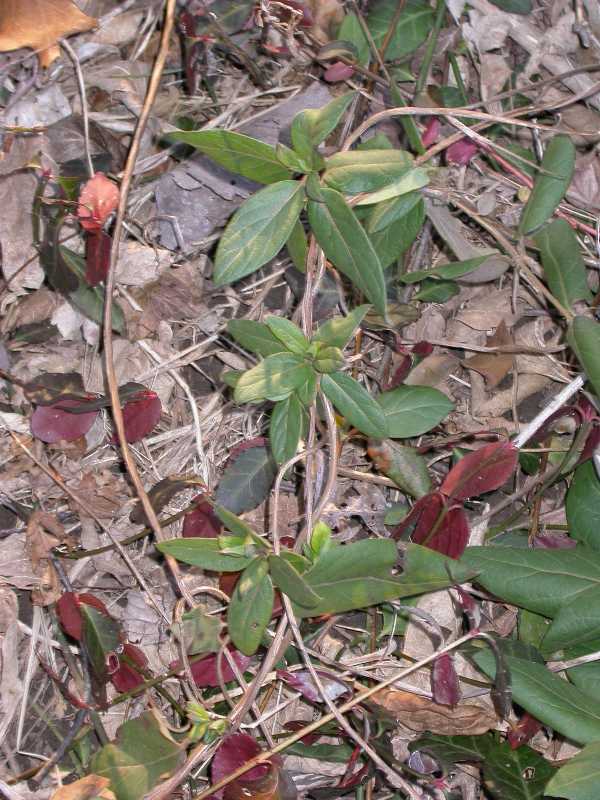 |
Japanese honeysuckle (Lonicera japonica) growing in lawn area |
Many plants that come back year after year and form a woody stem can become tenacious weeds in a garden. Some examples include: trees such as mulberry, ash, sweet gum, and black locust; shrubs such as honeysuckle, blackberry, and lespedeza; and vines such as poison ivy, honeysuckle, kudzu, Virginia creeper, trumpet creeper, clematis vine, wisteria, and English ivy. Left unchecked they can quickly overtake a garden or fencerow.
Life Cycle
Many woody perennial weeds get their start in your garden from seeds, which blow in, come in in mulch or are brought in by birds or other animals. Once in the garden, some, such as black locust, can spread by roots underground or re-sprout from roots left in the ground even after most of the plant is removed.
Integrated Pest Management Strategies
1. Proper maintenance and weeding.First, try and keep the weed plants from getting established. Use mulch, landscape cloth or other physical barriers to prevent seeds from becoming a problem. Weekly weeding keeps the flower bed free of volunteers.
2. Plant removal and stump treatment. Once the plants get established the best control is to dig up the invasive plant roots and all and discard it. If plants are too large or difficult to dig out, cut off the stem close to the ground leaving a stub or stump. Paint the stump with a stump remover or an herbicide containing 2,4-D such as Weed-B-Gone straight from the bottle and cover with soil. The herbicide will move down the stump and kill the roots of the plant. Use caution when using either of these products straight from the container as careless use can damage nearby plants, which may be sensitive to the herbicide. Alternatively, let foliage regrow on the stump to 12–18 inches then spray the foliage with a brush killer or one containing glyphosate (Roundup) with is absorbed through the leaves and will be translocated to the roots where it will kill the plant’s root.
3. Treat larger areas with herbicides. Selective herbicides such as Weed-B-Gone can be safely applied to woody perennial weeds growing in lawn areas but great care must be taken when using them in and around other broadleaf plants. Additional care must also be taken when using non-selective herbicides in all locations as overspray onto surrounding grass or broadleaf plants will cause damage. Always thoroughly read the label of the product you plan to use before applying.
4. Proper timing. If applying herbicides, apply when the weeds are most susceptible. Most perennial weeds are susceptible to herbicides when they flower, or in late summer and early fall. Timing varies for each plant so read the label carefully.
(The following Weed ID pages linked to with permission of UMass Extension.)
Organic Strategies
Strategy 1 is a strictly organic approach. Removal by hand, as suggested in Strategy 2, is an organic approach.
More images:
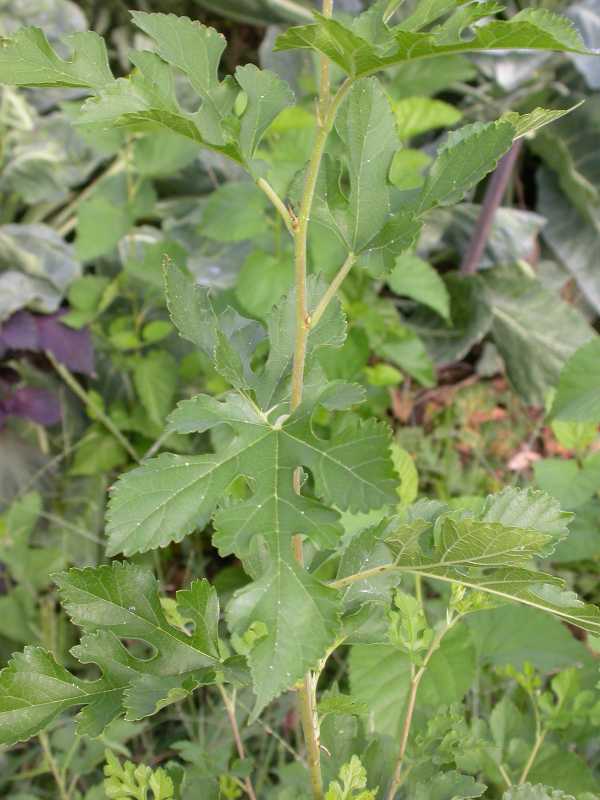 |
| Mulberry trees (Morus) can be difficult weeds |
|
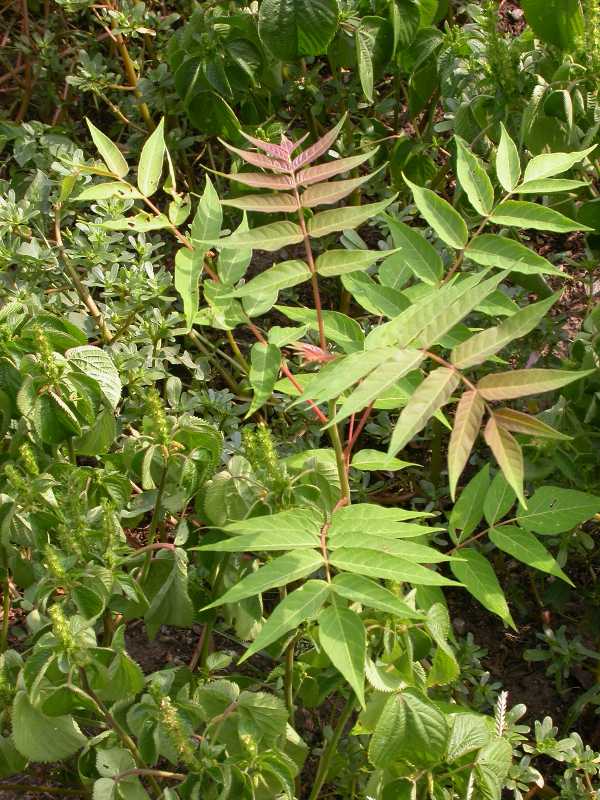 |
| Tree of heaven (Ailanthus altissima) is aggressively invasive, spreading by root suckering and self-seeding |
|
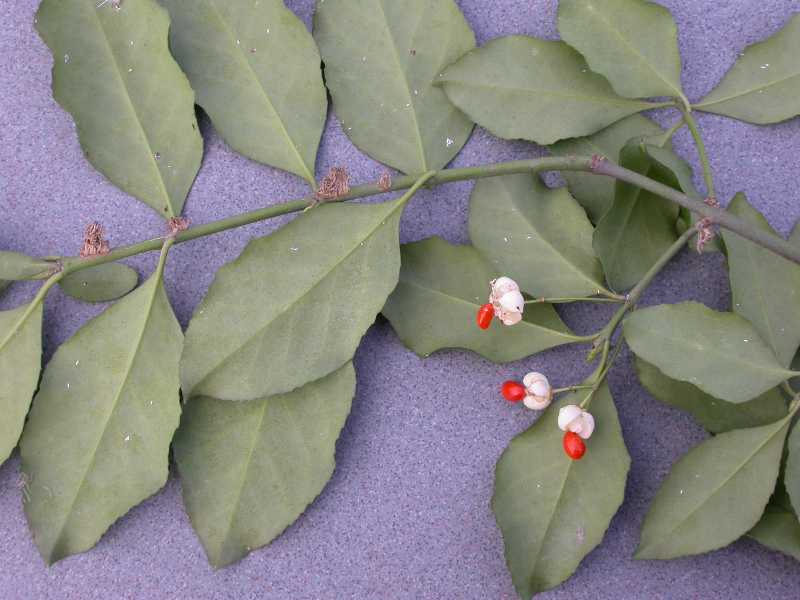 |
| Wintercreeper euonymus (Euonymus fortunei) |
|
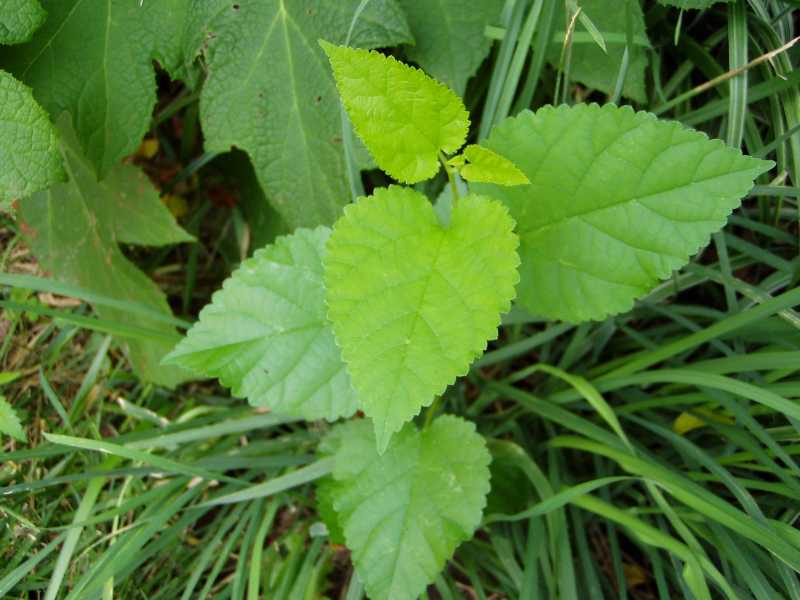 |
| Mulberry seedling (Morus) |
|